Context
The Parc de l’Alba is a new urban development located in Cerdanyola del Vallès, a city of 57,000 inhabitants in the area of Barcelona. The park aims to become a model of sustainable growth and has therefore partially implemented a high efficiency energy system that produces electricity, heat and cold with a DHC network.
At the moment, the Parc de l’Alba is operating with a single generation plant, which supplies heating and cooling mainly with combined heat and power engines, backup gas boilers, absorption chillers, and compression chiller. This plant is ready to increase its capacity when the energy demand grows. Moreover, two more production plants are planned to be implemented according to the pace of the urban development.
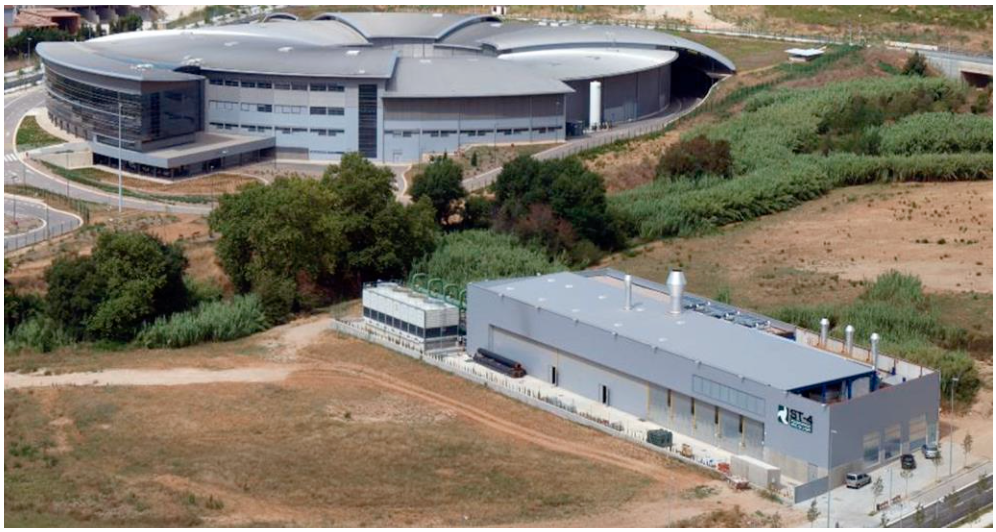
Parc de l’Alba has a good potential for solar energy harvesting, with an annual direct nominal irradiation (DNI) of 1,765 kWh/m2/year, which would be even suitable (although not optimal) for CSP.
Cerdanyola is placed near different forest and agricultural areas, which is translated to different possible suppliers of biomass according to ICAEN. The prices of pellet and woodchip in 2017 were estimated around 0.057 €/kWh and 0.028 €/kWh, respectively.
The geothermal potential expected in the area is low, with values ranging 35-50 W/m. This will also determine the drilling feasibility. Cerdanyola does not have significant wind and hydro potential.
Finally, the Parc de l’Alba currently contains two data centres connected to the district network, with a total electrical installed capacity of 10.7 MW. While these are currently connected as consumers of district cooling, they could be used as a source of waste heat. No other industries are present in the immediate area.
Area
The Parc de l’Alba DHC is part of a new urban development. Deployed in stages, more services building are regularly connected to the existing network as the residential areas develop.
Currently, there are two data centres and three office buildings connected, although further services and industrial buildings are expected, and a residential development is planned.
The most singular feature of this site is the presence of the Synchrotron light lab, which is a major cooling and electricity consumer. These building have a very high cooling and electricity demand, that is the reason why the Parc de l’Alba could be a cooling dominated network.
The two data centres are connected to the network only usee the DHC as backup for their own cooling equipment, hence having minor impact on the demand of the grid.
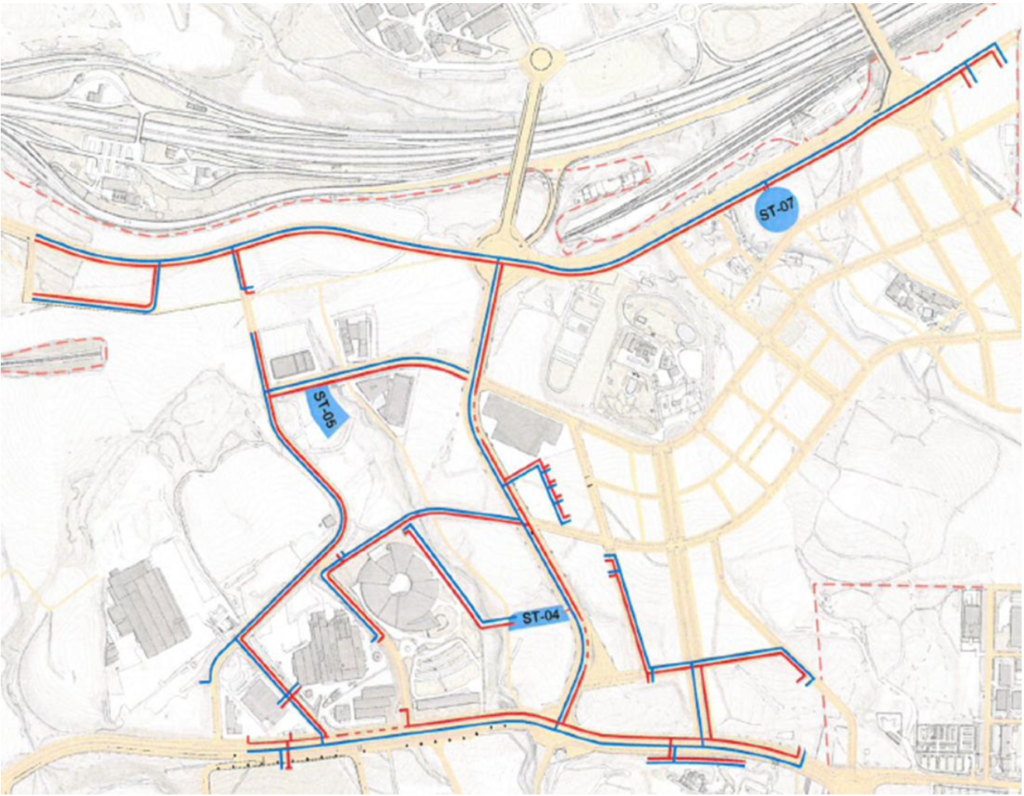
The next table summarises the total energy supplied to the connected buildings by the Parc de l’Alba generation plant in 2019.

Energy demand
The Parc de l´Alba has two types of energy demands:
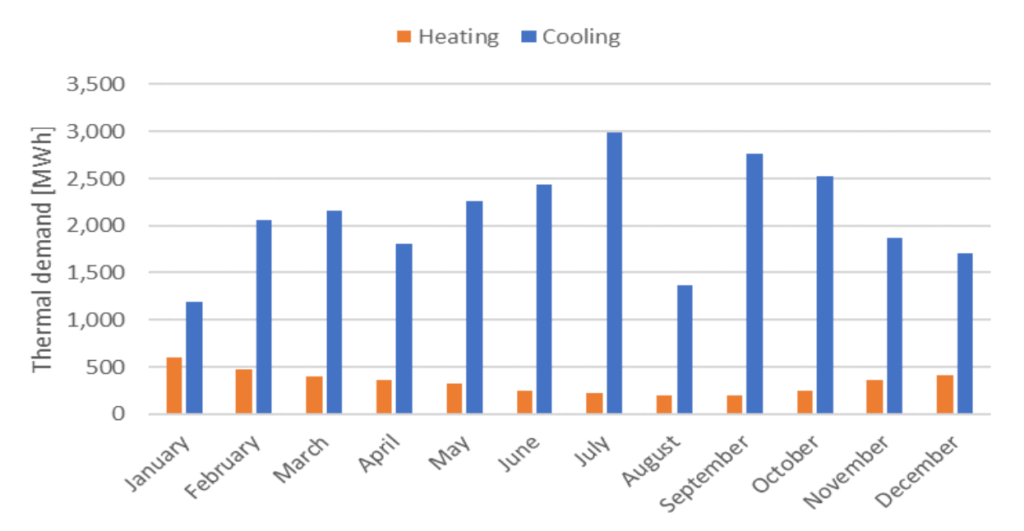
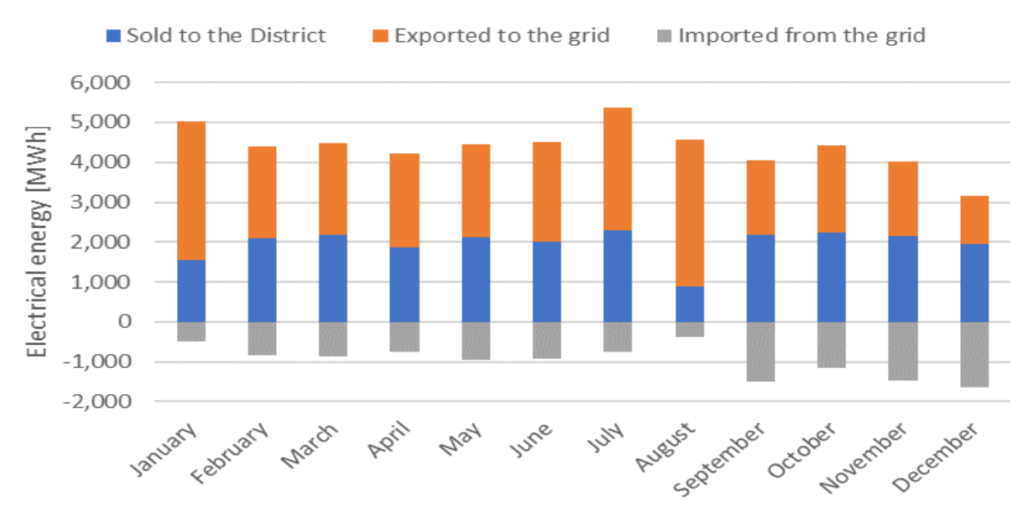
So far, to cover these demands, the Parc de l’Alba DHC is running with a single generation plant. The CHP engines are used to supply the absorption chillers or to cover the heating demand, with the electricity sold to the Synchrotron or exported to the grid. The cold water storage is used to buffer the cooling demand, with the compression chiller covering the peak demand of cooling.


Proposed technologies
The Parc de l’Alba’s existing DHC network is already showing a good generation efficiency. The analysis will focus on identifying the potential of incorporating renewable energies and waste heat recovery to cope with the increasing demand that will come with the new residential areas connected to the DHC system.
The technologies and solutions proposed to be studied in Parc de l’Alba demo-follower are the following:
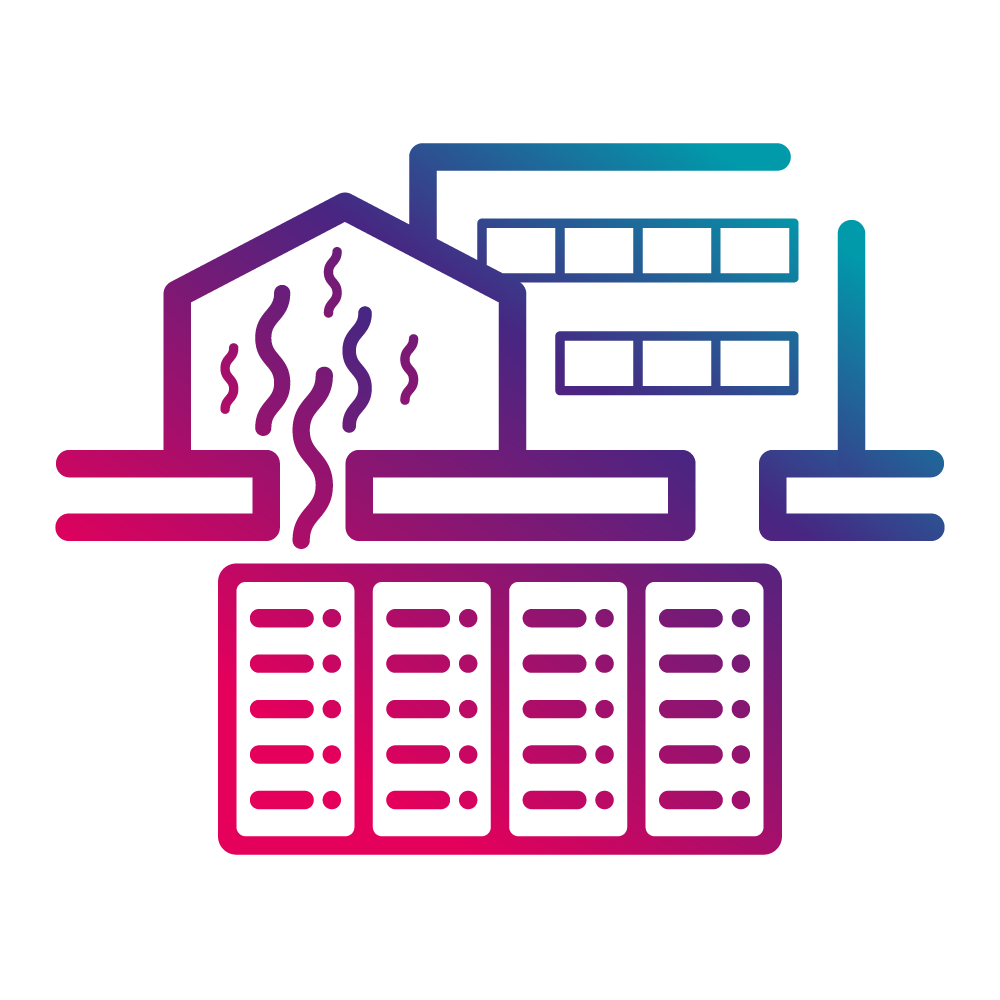
Waste heat recovery of data centres
Waste heat recovery from the chiller condenser with booster heat pump. Waste heat recovery from the chiller condenser with FC.

Advanced Absorption chiller
Compare WEDISTRICT absorption chiller with the performance of the existing single and double effect absorption chillers.

Solar technologies
Integration of solar panels in the central station to cover extra heating load. Considering: DNI of 1,765 kWh/m2/year; average annual sunny days 64.5 days /year; average annual temperature 15.5C; average minimal temperature in January 5.3C; average maximum temperature in July 28.4 C

Hot water storage
Optimised water storage sized for acting as solar buffer.
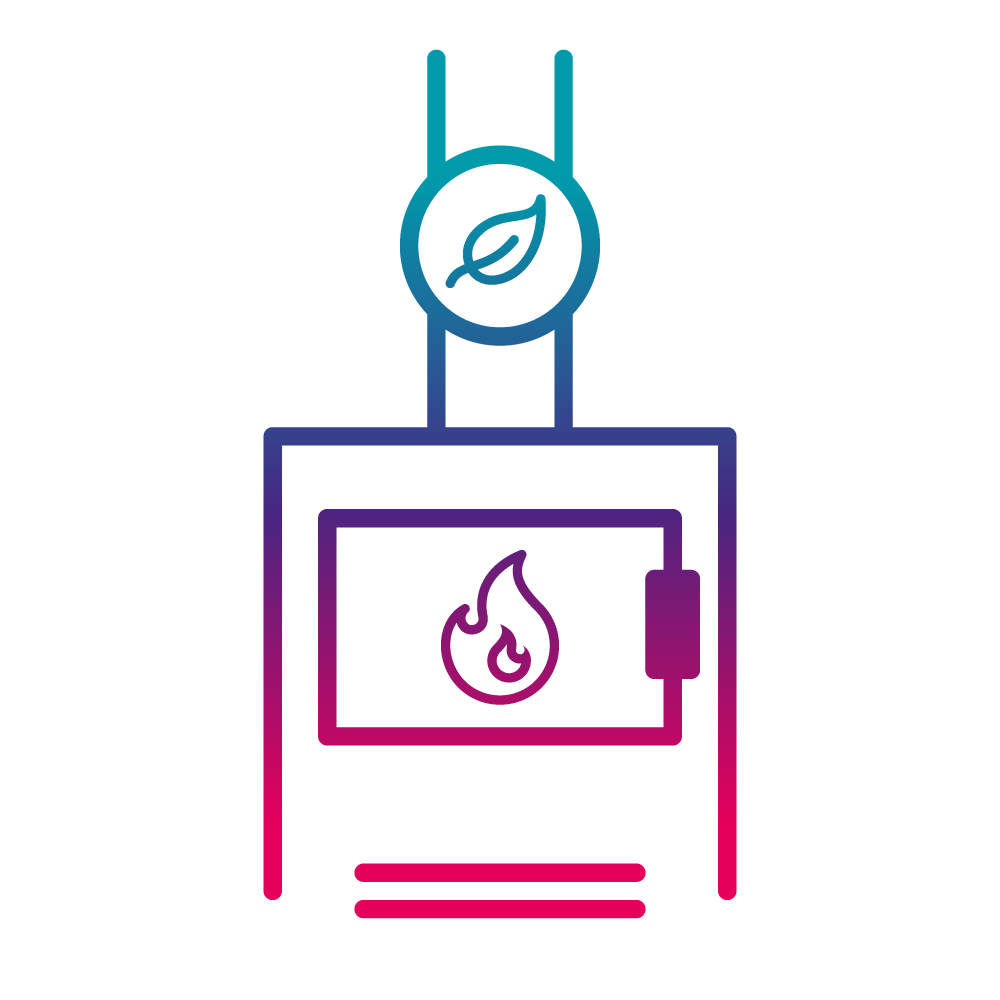
Biomass boiler
Biomass boilers installation for covering peak loads.

Renewable air-cooling unit (RACU)
integrated in buildings.
Proposed solutions
The combination of the different technologies generates four main solutions which will be studied in the next steps (other solutions might arise during the activity):
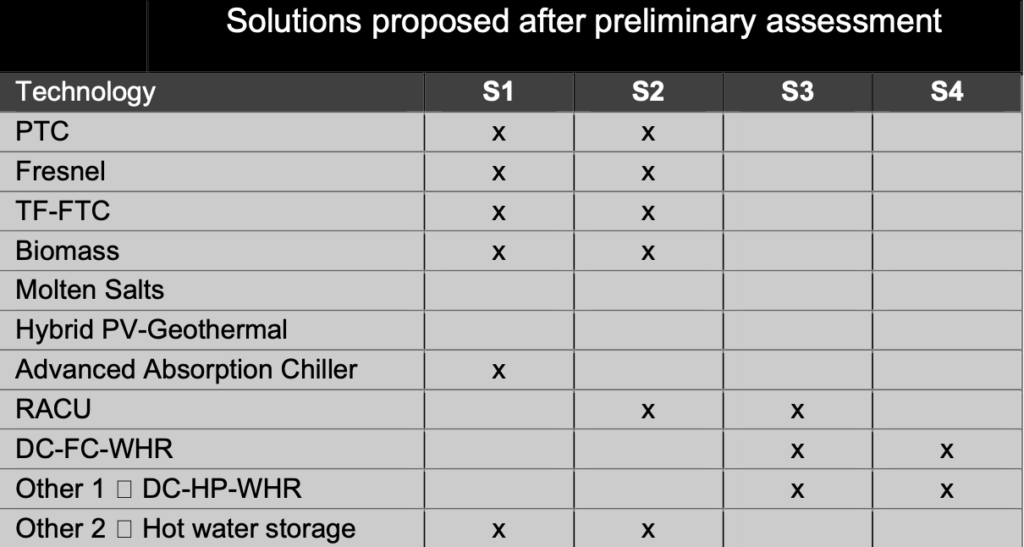
Solution 1
This combination integrates renewable energy and improves the efficiency of the cooling production by operating under solar cooling concept with WEDISTRICT improved efficiency absorption chiller.
The biomass boiler reduces the gas consumption of the peak plant and increases the capacity of the plant to cover the increase of demand. It considers that the existing CHP is still the main heat supply, as it is also the main electricity supply to the Synchrotron.
Sub-cases will be generated, isolating the contribution of each of the added technologies in order to find the optimal solution. These will be divided between demand with currently connected building and forecasted demand with the new residential development.
Expected Impact
Reduction of the fossil fuel consumption
Improvement of absorption chiller performance
Maximisation of solar resources
Evaluate the availability of biomass and cover extra heating load
Solution 2
This combination integrates renewable energy and improves the efficiency of the cooling production, by using renewable air cooling units for supplying the residential and office buildings, hence reducing the cooling demand to the existing absorption chillers.
The biomass boiler reduces the gas consumption of the peak plant and increases the capacity of the plant to cover the increase of demand. It considers that the existing CHP is still the main heat supply, as it is also the main electricity supply to the Synchrotron.
Sub-cases will be generated, isolating the contribution of each of the added technologies in order to find the optimal solution. These will be divided between demand with currently connected building and forecasted demand with the new residential development.
Expected Impact
Reduction of the fossil fuel consumption
Improvement of absorption chiller performance
Maximisation of solar resources
Evaluate the availability of biomass and cover extra heating load
Plan new development of residential buildings equipped with RACU
Compare investment and operation cost
of four-pipes configuration (DHC to buildings) and two pipes (DH + RACU to buildings)
Solution 3
Exploit the available waste from the DC already connected into the DHC to reduce the heat demand of the plant. Considers two scenarios, WHR with current state of the art DC and with refurbished green DC.
Expected Impact
Reduction of generation plant heat demand
Reduction of overall district primary energy and CO2 emissions
Increase of DC efficiency and profitability
Solution 4
Exploit the available waste from the DC to minimize the impact on the heating and cooling demand caused by the connection of the new residential development. The constant supply of heat by the DC covers part of the heating demand of the residential building in winter and supplies the heat required to operate the RACU covering the cooling demand of these buildings.
Expected Impact
Minimise increase of generation plant heat and cooling demand
due two new residential buildings
Reduction of overall district primary energy and CO2 emissions
Increase of DC efficiency and profitability
Compare investment and operation cost
of four-pipes configuration (DHC to buildings) and two pipes (DH + RACU to buildings)
The Parc de l’Alba demo-follower represents a specific case of growing DHC network. It has significantly higher cooling demand, mainly due to the presence of the Synchrotron. Moreover, the needs of this facility make a significant part of the cooling load independent of the weather conditions.
The main focus of this case will be:
- improvement of the current facilities
- exploitation of the available waste heat from the big data centres already connected to the grid
- planification of the generation capacity increase to cover the new demands from the residential area, which is currently under development.